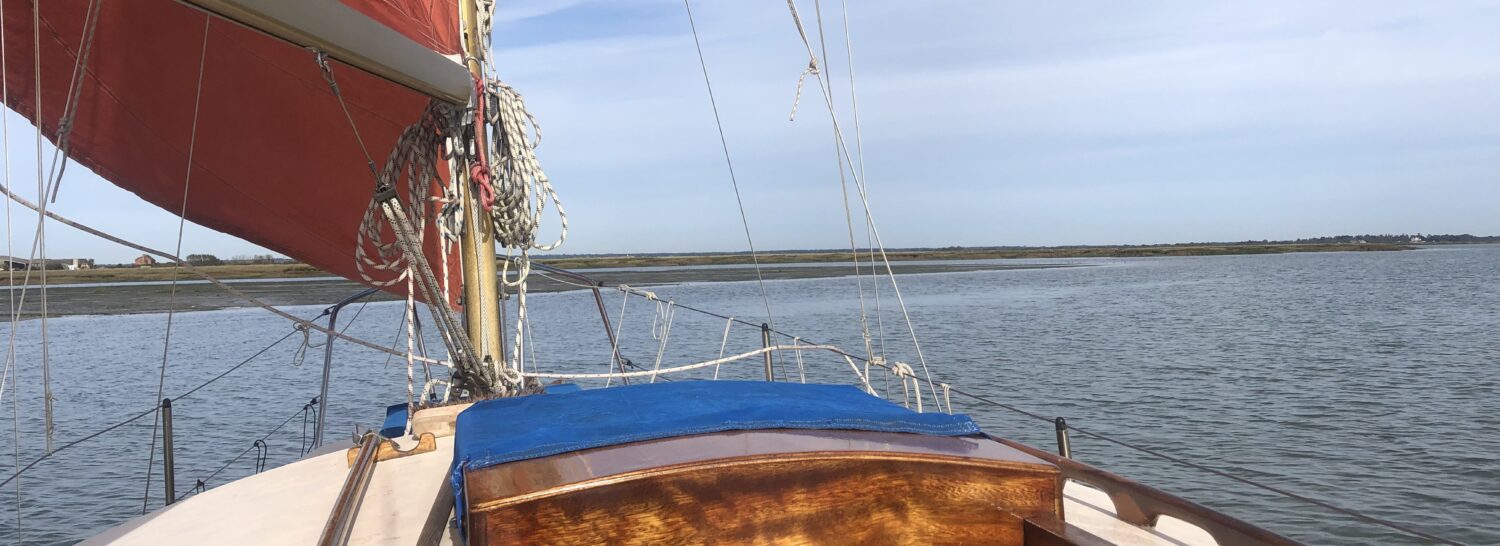I was alerted to the film, ‘The Long Memory’ by a fellow sailor during last autumn. I quickly discovered that it was based on a book by Howard Clewes, author and film script writer.
Howard Clewes was born in 1912 and died in 1988. His early life was in York – far from the silty Thames. He was a BAFTA award recipient during his career. As far as I can ascertain, The Long Memory was his only book to feature spritsail barges and the R. Thames.
The film was good, however, at the time the hacks tore into the ‘wooden’ characters depicted… The book is a fabulous yarn.
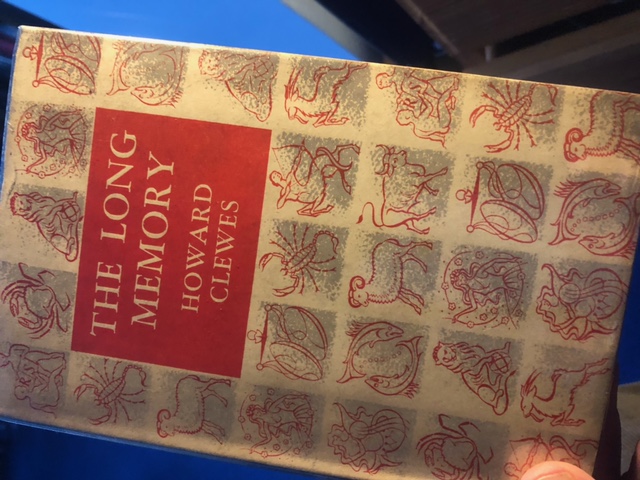
It is a story of a chap’s release from prison for murder. It was a murder he did not commit. The chap finds a home on a hulk amongst others in a graveyard The back story comes out as the book progresses with the character searching for the two people who’s untruths put him behind bars.
The untruths, wrongful corroborative statements that a deceased person was not who he was. As you will find, the deceased is later found alive and well in Shad Thames running a tug business and a racket besides.
The synopsis of the book is in a link within the link below:
https://en.wikipedia.org/wiki/Howard_Clewes
The so-called murderer was heir to a tug business based at Gravesend but he fell in with the daughter of a barge owner (once of a small fleet) who drank all the profits. The owner agrees to transport a bank robber on the run to a ship out in the estuary … and the tale unfolds…
For me, the main story was enthralling. It is a clever tale with the London River’s reaches weaving through it. Anyone whether or not they have sailed this waterway will be carried along on the flowing tides…
The book and film both open with the released prisoner (on licence) taking up residence aboard an abandoned barge (lighter) with a hut on its deck in ‘Morocco Bay’ on the Grain peninsular along the Blyth Sands…
There are evocative views purporting to be in either Egypt of St Mary’s Bay that were filmed in Bedlams Bottom where lighters and a few other barge types and the odd spritty or two were laid up against the sea wall.
I think St Mary’s is the place for a track runs out from a road across the low grazing marsh from High Halstow. It was extended at start of WW2 to a set of buildings housing men protecting a river barrier built here.
Having sailed those delightful waters at the foot of Stangate for most of my life and investigated the wreckage, now containing the remains of the famous racer Veronica, it was fascinating to see how it all was several decades before my own wanderings. Google earth clearly shows these vessel remains.
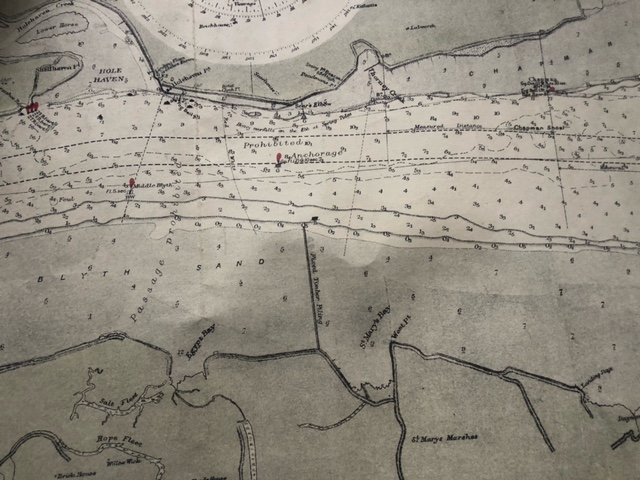
In the book, towards its conclusion (film differs), the main character is set down on the boom end from a river boat and he walked ashore into danger…
An arial photograph I found on a web site ‘beyondcanvey.wordpress.com’ which has come from archives clearly shows a building of some sort at the outer end at edge of the Blyth. The deep channel floating boom was tended by naval-ised fish-trawler types manned by probably men of the ‘way navy’…
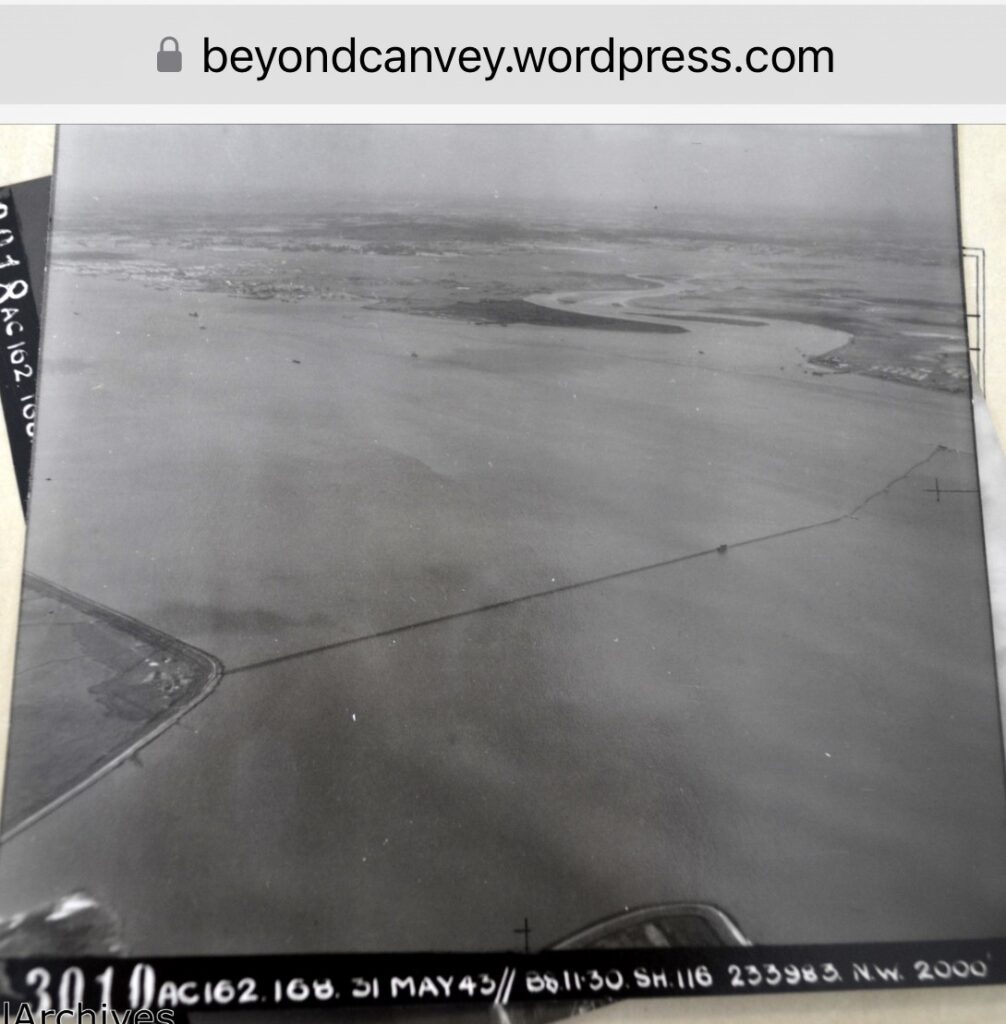
The web page was interesting for the archive photographs (not referenced) and is worth a look.
Very few of the places are now as described by Clewes and used for filming. The eastern end of Gravesend has changed dramatically, as has Shad Thames and the area immediately upriver of Tower Bridge. The only areas that are still hauntingly wild and lonely are St Mary’s Bay and Bedlams Bottom where filming took place. The remains of wrecks are still there too…
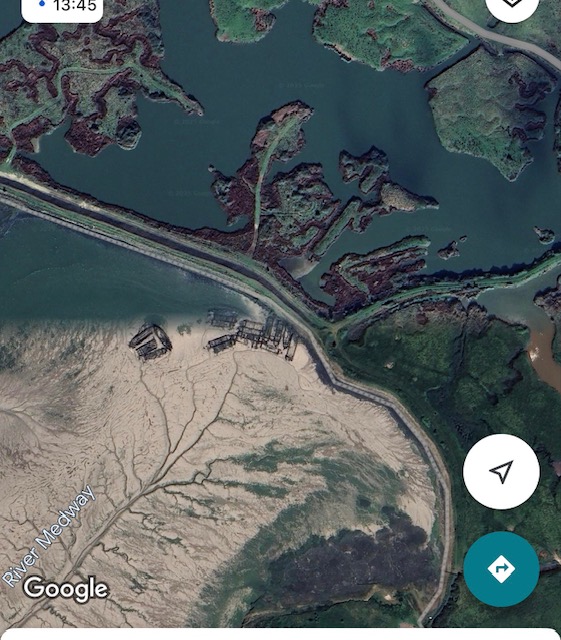
The inshore row will be instantly recognisable as the film site.
For interest, Veronica is uppermost western vessel with another across her stern end.
The Sirdar is at foot of view near a ‘sandy’ do, on the southern shore.
Copies of the book are available on line, but check your local library as it may well be held in a reserve stock.
I have not tracked down which spritsail barge was used, but it was a yacht-barge, and no, it was not destroyed in the film!
A link to a YouTube film:
A fascinating and enjoyable read which can be backed up with the 1953 B&W film that evocatively captures the book…
